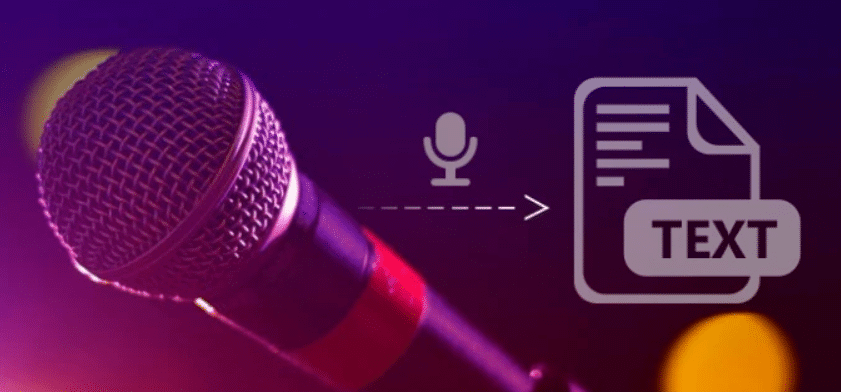
Some Easy Ways To Transcribe Foreign Languages
Anyone out there who is a professional transcriber or has ever worked in the transcription department would outrightly tell you how hard it is to provide transcription services for speakers, for editing. It becomes even harder when the original audio is or was in a different language than the one you already speak.
This means that you will not only be providing transcription services but also translation services, this means that it will be double trouble for you.
We can’t ignore the fact that a lot of foreign languages’ audio and video content contains important information. Being able to get a transcribed and translated version of the same would really be important.
We will look at different ways in which transcribing and translating foreign-language speakers would be less daunting for anyone who has been tasked with doing it.
Ways To Making Translating Foreign Language Speakers Easier
- Be sure to always use an interpreter when dealing with a foreign language. What this does is that it makes it easier for the interpreter to translate the content to a language where both of you understand and then one could transcribe the already interpreted content and create a text document of the target language. What an interpreter usually does is that they make sure that the content they are directly translating is accurate and correct so that when you put the content in word form, it’s ready to go straight to editing and not translation then editing, this makes it possible for producers to skip one step and meet their targets in time. Also, this means that the availability of an interpreter ensures that you get everything right the first time you get a chance, considering the fact that it’s very hard to have time to speak with the speaker again. We all know how recording is hard and tiresome when you interview someone, so an interpreter makes sure that the first and only chance is accurate.
- Another way you can simplify your work when working on transcribing and translating audio files with foreign languages is by splitting your audio and video files into smaller sections. You might wonder how this really helps, for starters, it is very easy to work with audio and video files which a short and precise unlike when working with an audio file with a lot of hours which gets tiresome by the mere thought that is an hour-long video. Splitting the audio and video into 10 minutes’ clips makes them a little less stressing. You can also send the short clips to people who understand the foreign language to help you out with the translation “you know how they say two heads are better than one?””
- When speaking with a foreign speaker it is really always advisable to ask very specific questions to get specific answers. Imagine asking open-ended questions and getting a 3 minutes’ explanation of a question that would have been closed-ended and gotten a yes or no answer with a bit of explanation. This is a very important point to note because you are trying as much as possible to get the shortest amount of audio or video to translate so the shorter and precise the questions are the better because they also set a pace on how the speaker needs to answer them. This also helps in transcription, where it is so much easier to transcribe a short-worded answer that transcribing a longer worded audio. Chances are that with a longer worded audio you might get lost along the way and have to restart or rewind the audio. This point applies to every interview, no matter the language spoken by your interviewees. If your questions are too broad, it is more likely that the answers will be long-winded and may wander off-topic.
- Working with labels always makes work so much simpler, I say this because imagine having a clatter of different topics and not knowing what exactly to put where because you jumbled up everything. So it is good to label all your video and audio clips when working on them. Remember how we talked about splitting audio and video files to make them easier to work with? It is very advisable to label those short clips so you know which one goes where and whatnot. What this does is that it allows you to work at a specific thought process and transcribe and translate it accurately before moving on to another one. This is one point that goes in line with the splitting of audio files.
- One thing that many people don’t take time to do in any work process is the planning stage. Let’s say you have worked on a certain audio or video file that you need to transcribe and translate. It is very important to decide on how this will be possible. Different ways in which you can work on your transcription and translation work is:
- Hiring a freelance transcriptionist and translator. This is usually an option for a tiny project which needs only one person to work on it because of its complexity or according to what you would like to achieve.
- Outsourcing transcription and translation service providers. These are companies that deal with offering these services, and they are the best for large projects that need many people to work on them.
- Using transcription software, which automatically translates speech to text. These are usually advisable for people who want to do the transcription for themselves. For personal use. The problem with these is that they are usually not as accurate as one would love their work to be.
- You can also do your transcription work manually at home by yourself. As much as it might tire, it ensures that the scripts are accurate and error-free because you did them yourself.
- Using any of the above methods provides one specific thing accurate for all of them and that is that it lessens your work by a mile apart from the last one which is working on the audio and video files by yourself.
- Another way you can make work easier when working on transcription and translation for a foreign language is to make sure you are constantly marking the audio and video clips for easier recording and editing. You can easily do this by using video and audio editing software, which allows one to insert comments on them. This really helps because you can collect more important and informational pointers that the speaker gave and note them down so when coming back for editing it becomes easy to know where exactly those points were at and you can even use them for creating sound bites and what not. If you have never tried this step, try it out because it really is a game-changer in how easy it makes work for you when editing because then you know where a specific point was and where another was too.
- I’m sure you have heard about time codes and timestamps before. If there is anything I have mentioned before and said is the most important step to note, then this one is also another important step not to forget. What time-stamps do is that one can accurately point out where the speaker talks and stops talking on a specific topic. What this does is that it gives you a heads-up on where to listen for the answer to a specific question and where it ends. This makes editing quick and also ensures that the translation is accurate because you will work with a specific context unlike when it’s mixed up. Also, if you are planning to use the transcripts further for dubbing or subtitling, the timestamps will really come in handy.
- Dubbing the interviews.
- Depending on what exactly your plan is, you can eventually dub the audio and video files into other languages and sell them or post them online and create a passive income for yourself. Remember the timestamps you had already created and the markings you had made on your script and audio? Yes, those will come in handy on this last step.
- Depending on what exactly your plan is, you can eventually dub the audio and video files into other languages and sell them or post them online and create a passive income for yourself. Remember the timestamps you had already created and the markings you had made on your script and audio? Yes, those will come in handy on this last step.
- When you finnish recording for the different languages that they record you for, then editing becomes easy because the file format is easy to work with. Without the timestamps, the recording would really be hard and it would take more time than it normally does.
- You might find some of these steps easier to work with than the other, it is advisable though to make sure you use the ones you think would be 100% accurate and useful to you. They sure help if used properly.







